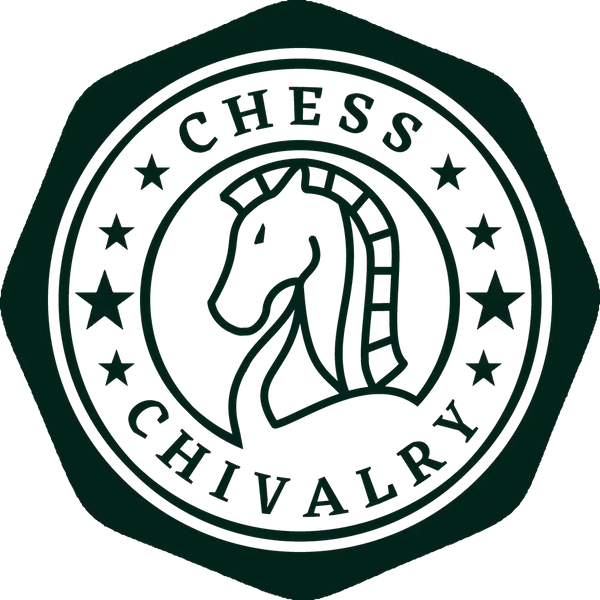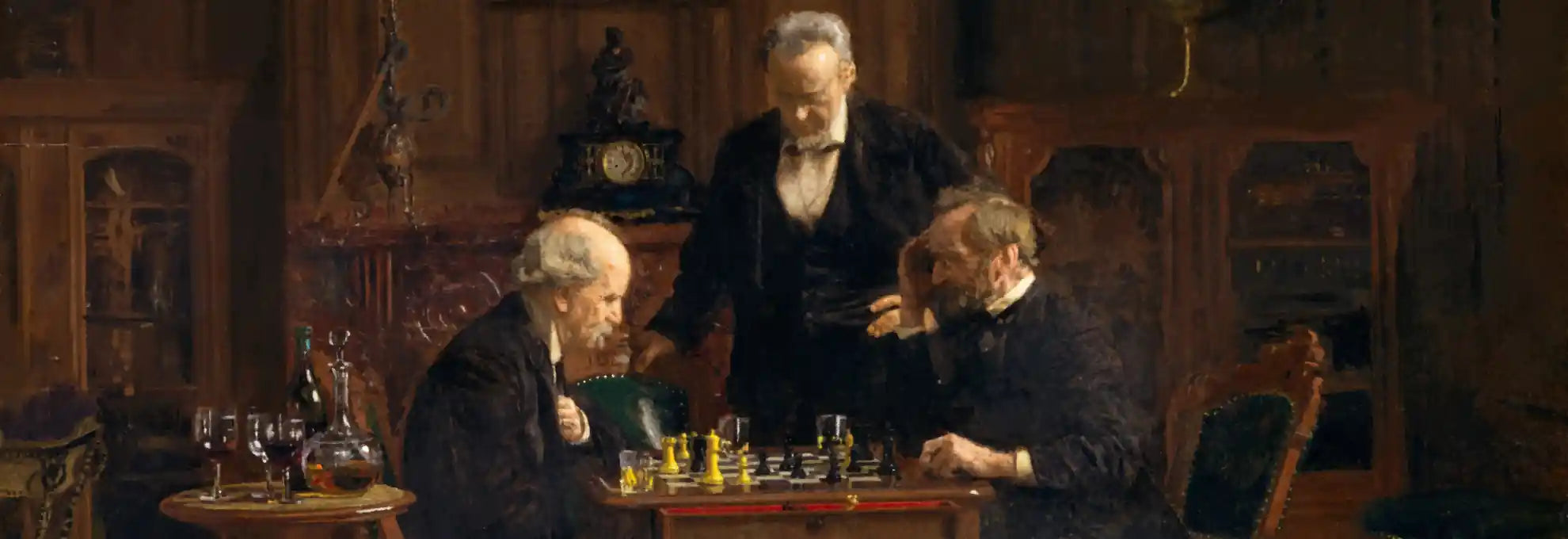
The Rules of Chess
Chess is a strategy game, which was invented about 600 years A.D. in India. The game revolves around a conflict between two kingdoms, which is played out by two players on a chess board. The board is composed of 8 x 8 squares, divided horizontally and vertically alternately into light and dark squares.
The kingdoms of each player are represented by different colored pieces: The color white for the starting player, the color black for the following player. Each of the two parties has a king, a queen, two bishops, two knights, two rooks and eight pawns, which can be moved as pieces across the board.
The Starting Positions of the Chess Pieces
All the pieces are placed on each player's side and arranged as follows:
1. In the corners of the first row are the two rooks
2. On the next two squares running inwards are the two knights
3. Next are the two bishops, directly adjacent to the king and queen
4. In the two middle squares stand the king and queen according to the following rule:
-4.1. The white queen stands in the center left on the white square of the same color
-4.2. The white king stands in the center right and thus completes the first row
-4.3. The positions of the black queen and the black king are mirrored
5. In the second row all eight pawns of the respective kingdoms are placed
Once all the pieces are placed on the board, the game can begin. The turns are made alternately by both players. The white player starts the game followed by the black player.
The objective is to checkmate the opponent's king. This means that the king must be attacked in such a way that he can not escape the attack by evading, attacking or being protected by another piece - more on this later.
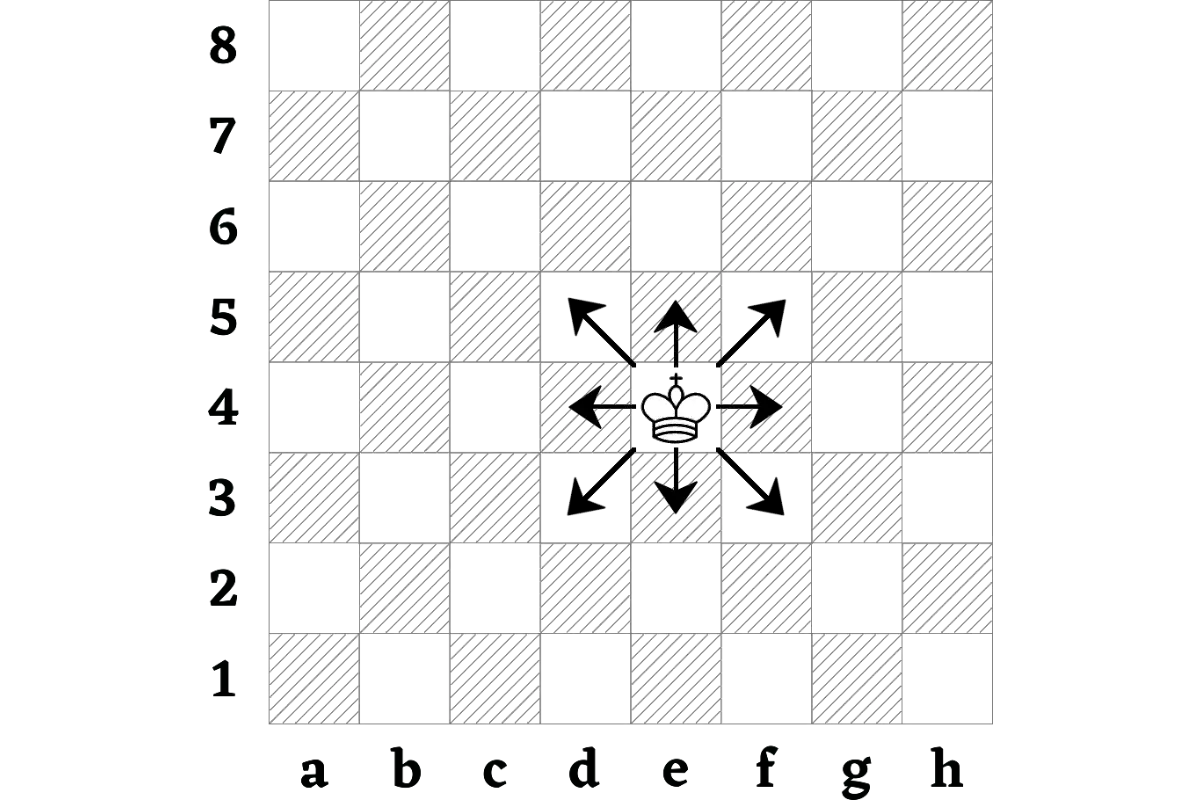
The Rules for Moving the King
"Capture of the adverse King is the ultimate but not the first object of the game"
(Wilhelm Steinitz)
Even though the king is the most important piece in the game, he moves very limited compared to the other pieces. He moves in all directions, horizontally, vertically and diagonally, one square at a time. However, he may never move directly into check or onto a square that is under attack. The king has to be protected at all times and must not be captured by attackers. One special move the king can make is castling - more on that later.
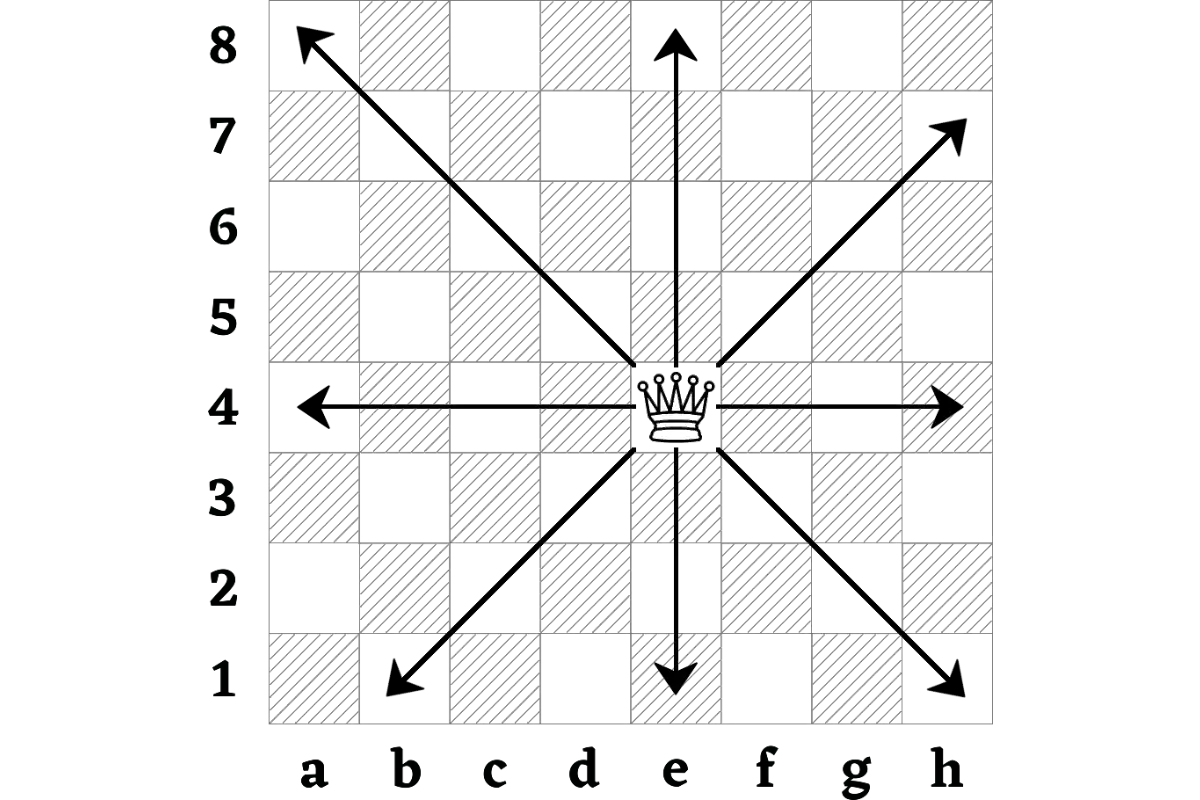
The Rules for Moving the Queen
“It's like chess, you know. The Queen saves the King.”
(Terry Pratchett)
The queen is the strongest and - with the exception of the king - the most valuable piece in the game. She can move horizontally, vertically and diagonally as many squares as she wants, and attack enemy pieces that are far away. Only allied pieces block her movement. The queen is a heavy piece and her value, measured against an equivalent of pawn pieces, is equal to nine (9).

The Rules for Moving the Rook
"The only good Rook is a working Rook"
(Samuel Reshevsky)
The rook is the second strongest piece in the game, surpassed only by the queen. He moves horizontally and vertically any number of squares and can capture enemy pieces on his way. He cannot move through allied pieces and is blocked by them. A special move that the rook can perform together with the king is castling - more about this later. The rook is a heavy piece and his value, measured against an equivalent of pawn pieces, is equal to five (5).
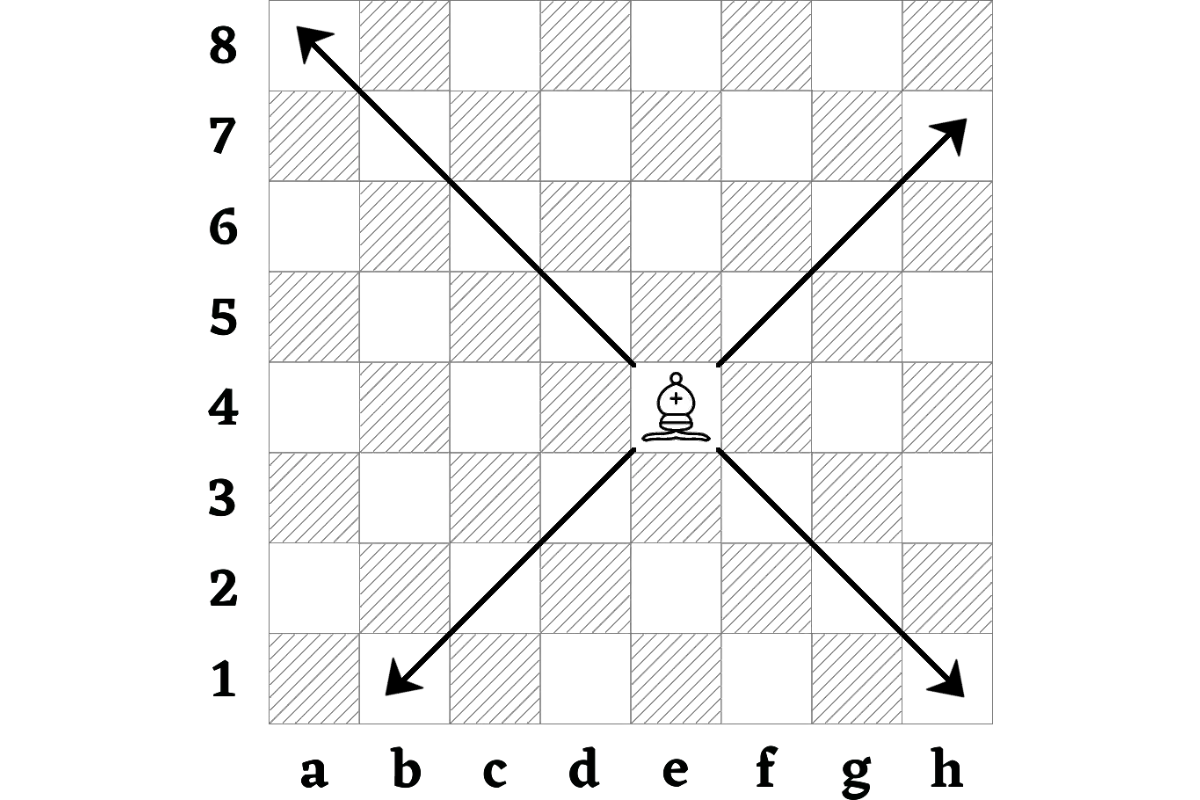
The Rules for Moving the Bishop
"Only a good bishop can be sacrificed, a bad bishop can only be lost"
(Yuri Razuvayev)
The bishop makes his move along the entire diagonal and can capture enemy pieces on it. Allied pieces block him, which is why he cannot move through them. Due to the diagonal movement, the bishop is bound to the color of the square of his starting position, which is why he can increase or decrease in value, depending on the constellation of pieces. The bishop is a light piece and his value, measured against an equivalent of pawns, is equal to three (3).
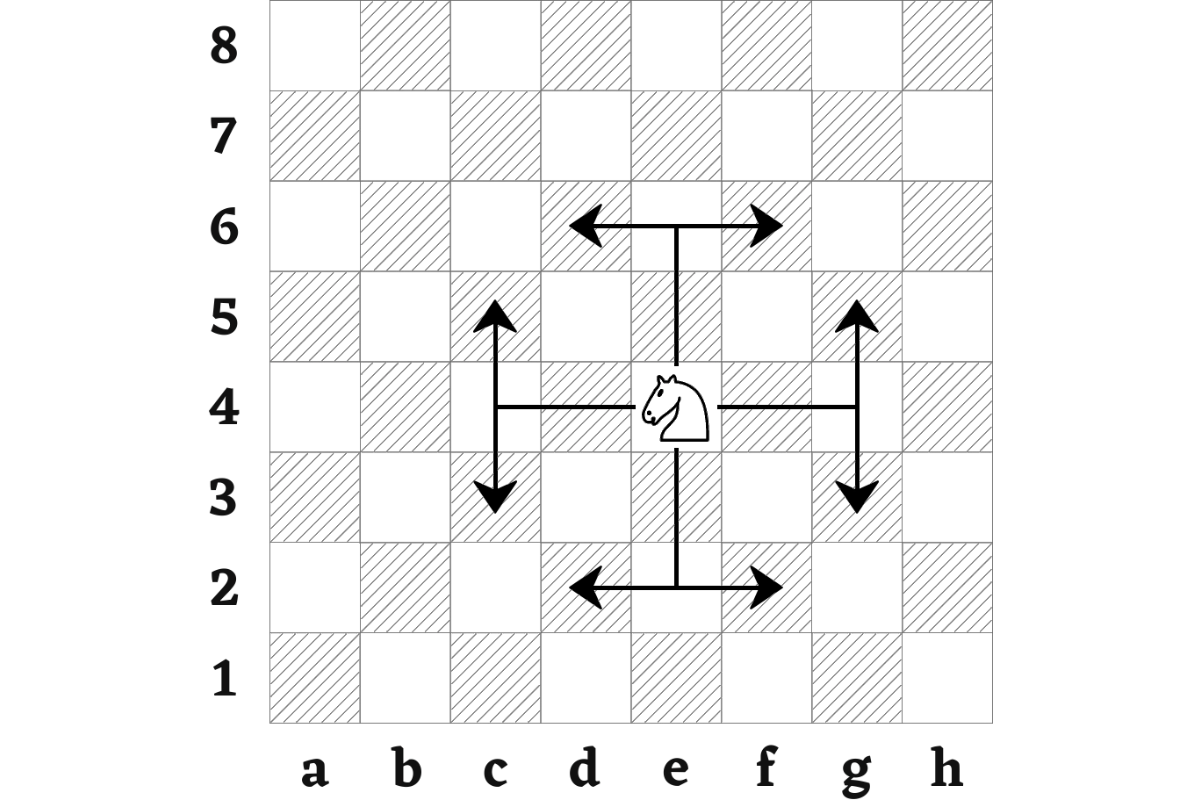
The Rules for Moving the Knight
"I have added these principles to the law: get the Knights into action before both Bishops are developed"
(Emanuel Lasker)
The movement pattern of the knight is quite different from that of all other chess pieces on the board. He moves horizontally or vertically two squares forward and then directly one square to the left or right. In other words, the movement corresponds to an "L" shape, with the color of the squares always changing during the moves. In addition, the knight is not blocked by other pieces, but simply jumps over them and captures opposing pieces on the target square. Only on squares occupied by allied pieces he cannot move. The knight is a light piece and its value, measured against an equivalent of pawns, is equal to three (3).
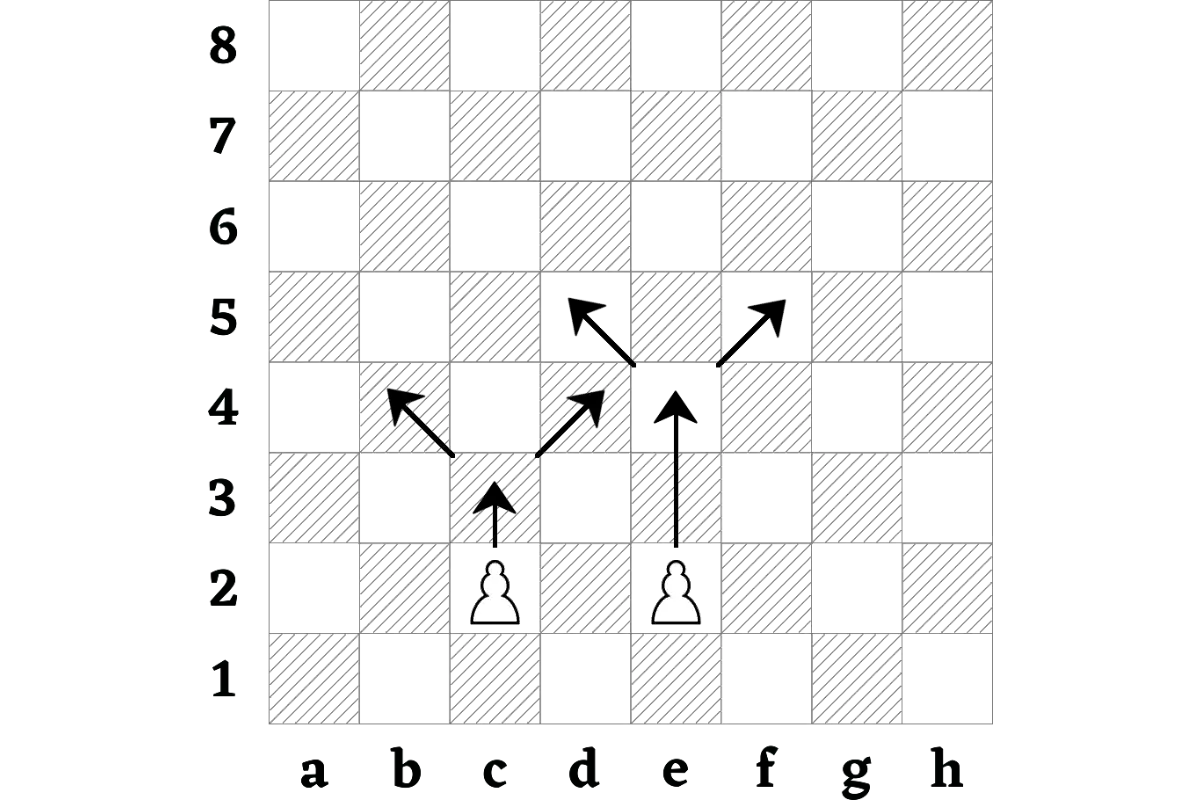
The Rules for Moving the Pawn
"Pawns are the soul of the game. They alone create attack and defense, the way they are deployed decides the fate of the game."
(Francois Andre Danican-Philidor)
The pawn always moves straight forward and captures the opponent's pieces diagonally to the front. On the first move, the pawn has the option of moving either one or two squares forward. Afterwards, he always moves only one square forward, if he is not blocked by opposing or allied pieces. If a pawn moves to the end of the board, he must be promoted to a light or heavy piece, usually a queen.

The Rules of Check and Checkmate
“Modern Chess is too much concerned with things like Pawn structure. Forget it, Checkmate ends the game”
(Nigel Short)
The goal of chess is to checkmate the opponent's king. This is a game situation in which the king is offered check due to an attack and he has no way of escaping.
A distinction must be made between check and mate. Check describes only the situation of the attack threat, in which a piece could directly attack the king in the next move, while mate describes the situation of not being able to escape this attack threat.
From this, direct regulations can be derived for the king when he is offered check by an opponent's piece:
1. the king must immediately evade the check by moving to a safe square
2. another piece must move between the king and the attacking piece, preventing the check
3. the attacking piece must be immediately captured by the king or another piece
If the king is unable to defend himself by evading, blocking or attacking, he is checkmated and loses the game.
If the king is not in check, but at the same time the player cannot move a piece, the game ends in a stalemate. Such a situation often occurs when there are only a few pieces left on the board, but they are blocked and the king, surrounded by attacking threats, cannot move either.
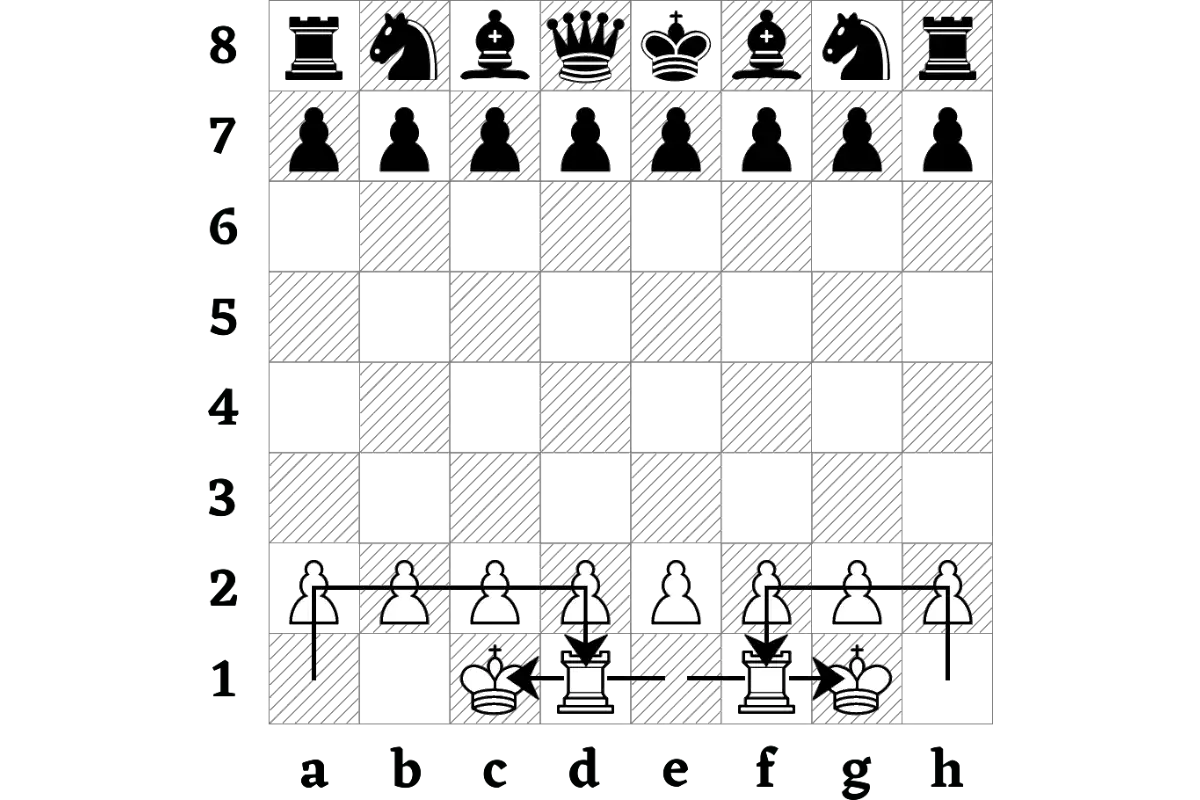
The Rules of Castling
“Castle early and often”
(Rob Sillars)
Castling is a special move that each player can make once per game under certain conditions. In this move, both the king and the rook are moved simultaneously. The king moves two squares to the left or right, while the rook simultaneously jumps over the king to the other side directly next to him. This maneuver symbolizes the building of a castle to protect the king.
For castling, the following conditions must be met:
1. neither the king nor the rook may have moved before.
2. there must be no other pieces between the king and the rook
3. the king must not be in check during or because of castling
4. the squares on which the king performs castling must not be threatened by an attack
Each player is free to castling. However, performing the move has the great advantage that the king is safe and the rook can be actively brought into the game.
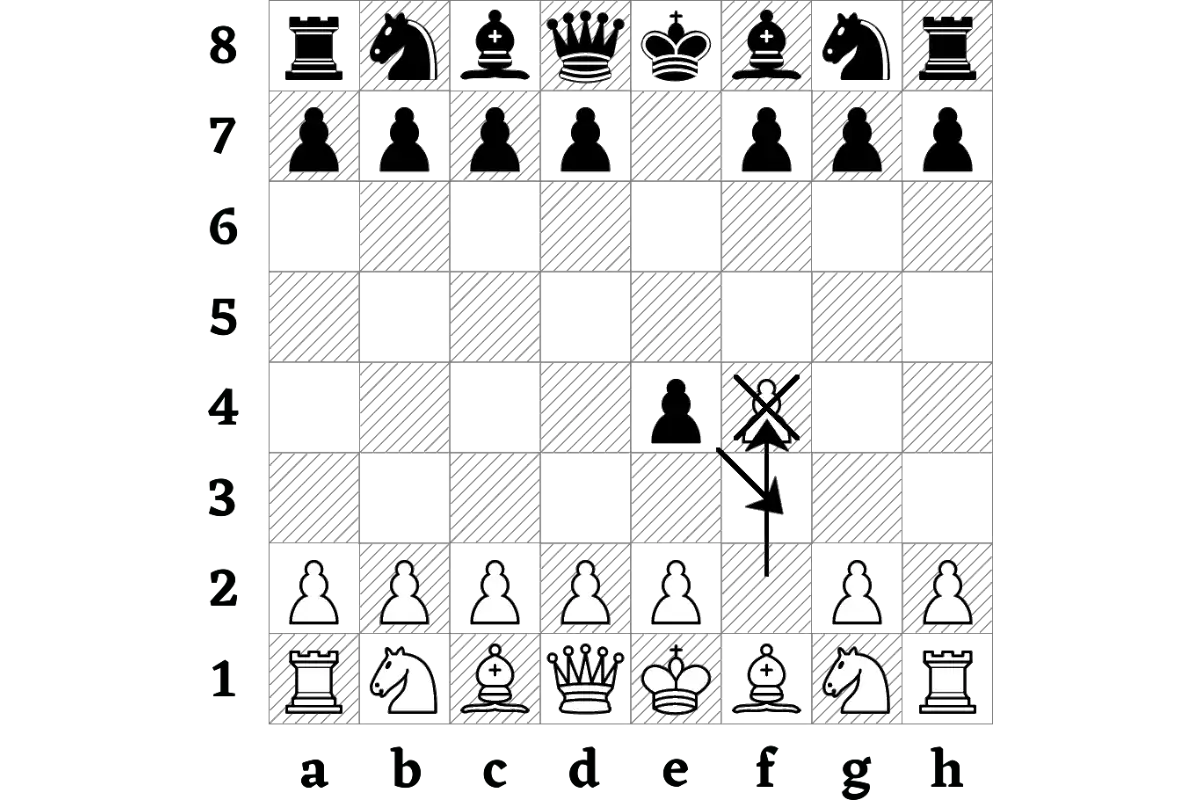
The En Passant Rule
"My opponent left a glass of whisky 'en prise' and I took it 'en passant'"
(Joseph Henry Blackburne)
The term "en passant" comes from the French and means "in passing". This rule states that a pawn who moves two squares forward on the first move can be captured by an opponent's pawn just as if he had moved only one square forward. The reason for this rule is to prevent an overly passive style of play, where players hold back their pawns only to move them two squares forward past the opponent's pawns. The "En Passant" rule prevents this, while maintaining the pawn's move by two squares to speed up the game in the early phase.
Chess Manoeuvres
-
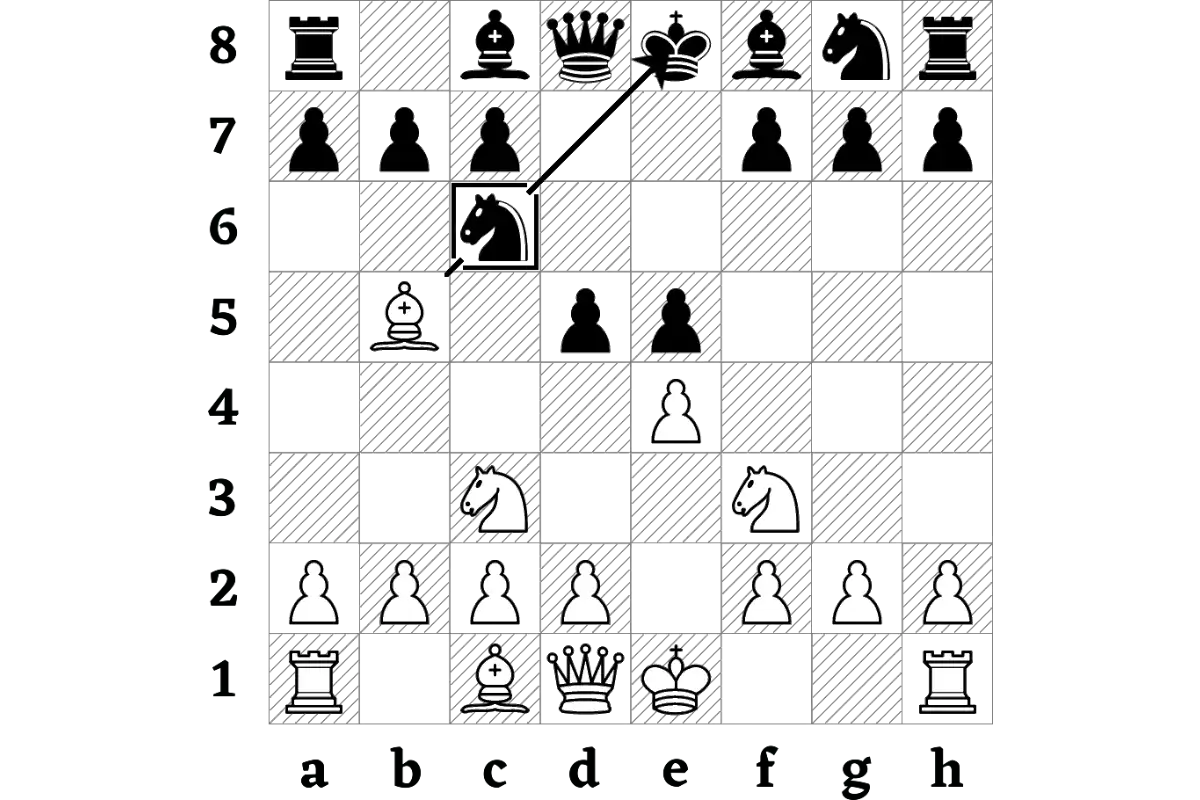
Pin
“Only the player with the initiative has the right to attack.”
(Wilhelm Steinitz)
A pin occurs when a piece is between its king and an attacking queen, rook, or bishop. Since a king may not be in check at the end of the move, this piece cannot move out of the attack path. Therefore, it is forced to protect its king. The pin is removed when the king leaves the attack path, the attacker is captured, or the attacker withdraws from the attack. -
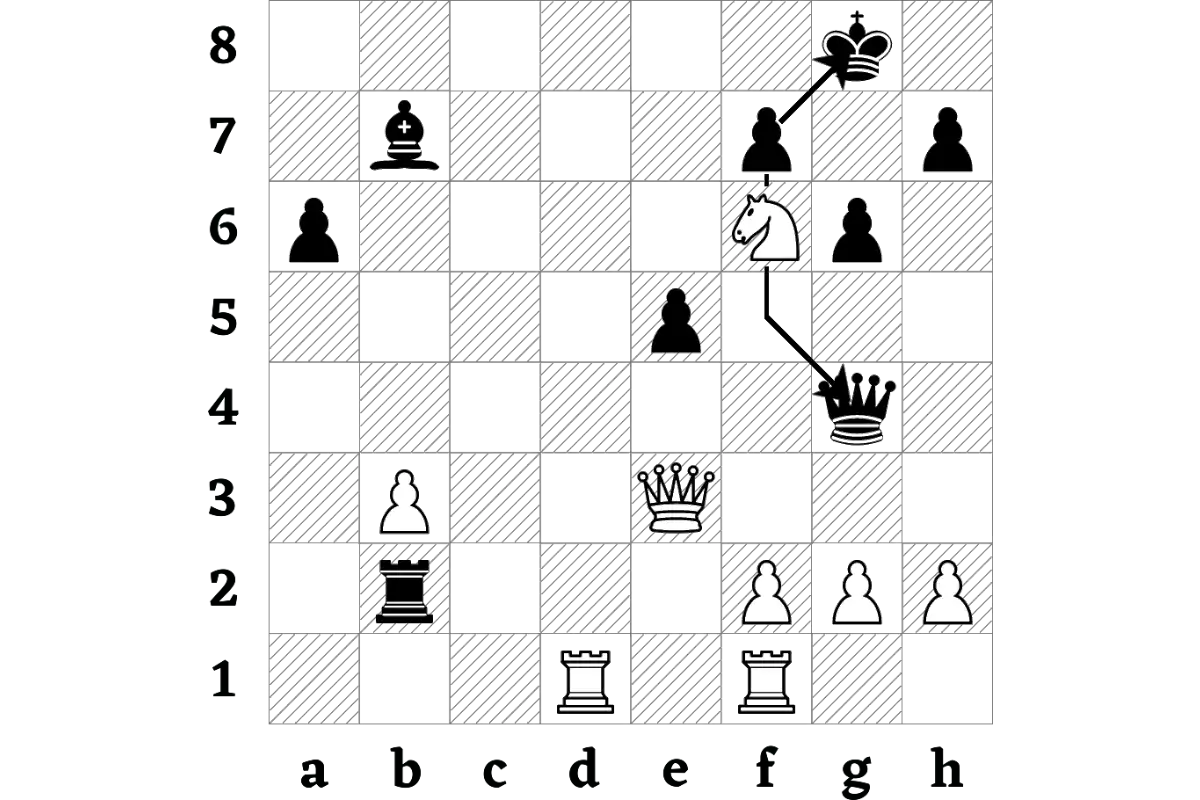
Fork
“The blunders are all there on the board, waiting to be made.”
(Savielly Tartakower)
A fork occurs when a piece moves to a square from which it can attack at least two opposing pieces. If the attacking piece itself cannot be captured by a counterattack, the defender can only protect one of his attacked pieces by moving it away. A fork is therefore considered a tactically strong maneuver that allows a significant advantage. -
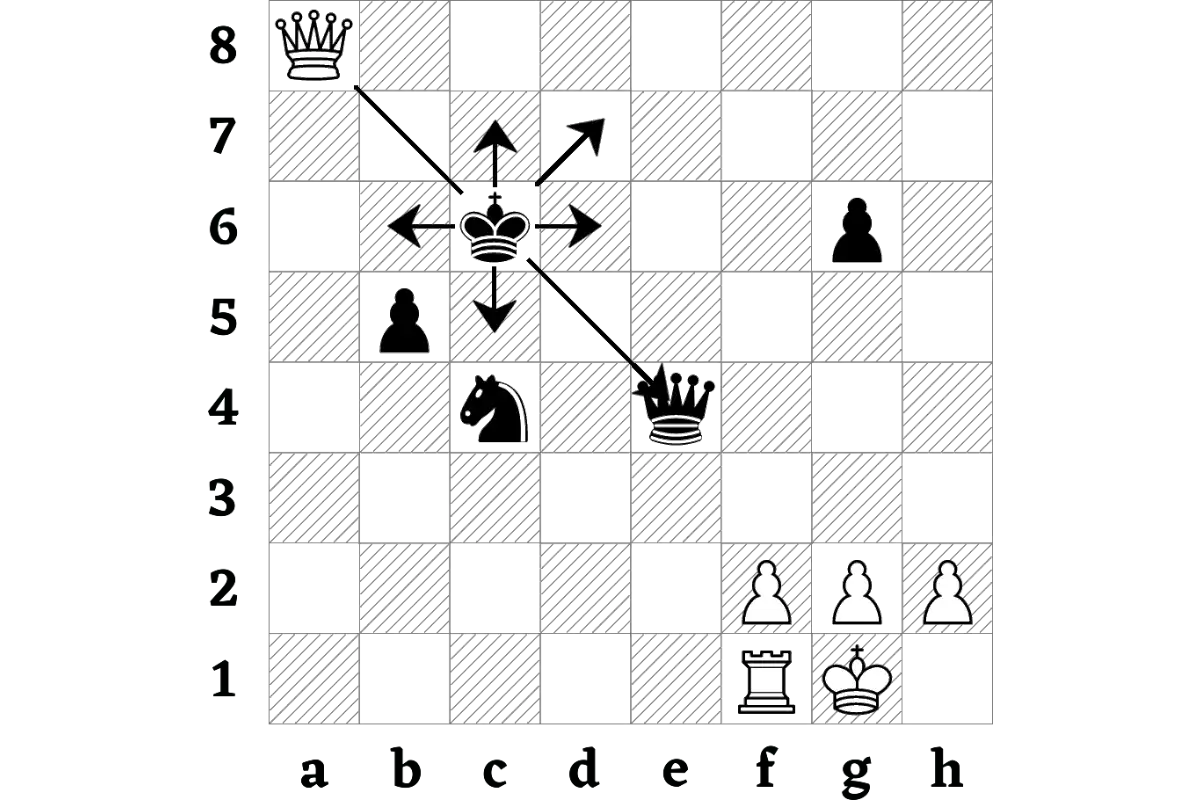
Skewer
"When you see a good move, look for a better one."
(Emanuel Lasker)
A skewer is when more than one opponent's target piece is on the attack path of a queen, rook, or bishop. The skewer is therefore similar to both the fork and the pin. The attacked player does have the option of moving one of his pieces out of the attack path. The other, however, remains attackable behind. In many cases this leads to sacrifices or losses of pieces, to the disadvantage of the attacked player.
Tips for the Opening of the Chess Game
1. who controls the center of the board, also controls the game
2. who develops all pieces early, has more attack and defense possibilities
3. who moves pieces several times in the opening phase, wastes his moves
4. who brings his queen too early and too carelessly into the game, makes himself vulnerable to attack
5. who sacrifices his pieces should always do so with the intention of getting something in return
6. who is threatened by his opponent, should react to this threat
7. who loses should learn from his mistakes
